Return to Marshall Space Flight Center
Static Test Tower
The Static Test Tower has proven to be one of the most versatile test stands at Marshall.
According to Power to Explore: History of MSFC, the static test tower was originally constructed to test rockets producing up to 500,000 pounds of thrust and was used to conduct 487 tests of the Jupiter missile.
It was upgraded to support 1.6 million pounds of thrust and began performing static tests of the first (S-I) stage of the Saturn I in 1961. Later, the S-IB stage of the Saturn IB rocket was also tested here. This stand saw 31 tests of the SA-T static test stage, 24 tests of 10 S-I flight stages, and 32 tests of 12 S-IB flight stages.
The west side was further modified to test the F-1, and 75 such tests were performed on it, the last in 1968.
It was reconfigured again in 1984 to perform structural tests of the Space Shuttle SRBs.
The STT seems to have had about as many names as duties: It was originally called the Static Test Tower (sometimes referred to as the "T-Tower," due to its shape). It was later called the Propulsion and Structural Test Facility, the Solid Rocket Motor Propulsion and Structural Test Facility, Hazardous Structural Test Complex, and simply "Building 4572."
Power to Explore cites 1951 as the STT's date of construction, although other sources indicate that its construction started in 1954 and that the first static firing in it took place in 1956. These dates seems more reasonable because a 1951 construction date would pre-date the Redstone Test Stand.
In recognition of the fact that it was the first place to test a cluster of rocket engines, it has been placed on the National Register of Historic Places; the nomination form (direct link to 422K PDF) for this honor is online at the National Parks Service; the accompanying photos (direct link to 2.2M PDF) are also online. Note that pages 11 through 13 in the "photos" PDF show Shuttle SRB testing.
It has also earned a place in the Historic American Engineering Record. The main page itself looks rather boring, but be certain to click the photos and drawings icons in the upper left of the page.
Fittingly, prior to its destruction the Block I Saturn Static Test stage (SA-T) was displayed next to the Static Test Tower, after having undergone 31 static test firings in the stand.
Some additional information about the Static Test Tower can be found in Historic Properties Report: Redstone Arsenal, Alabama with the George C. Marshall Space Flight Center.
The Redstone Arsenal Historical Information Website contains a page on Redstone facilities; near the bottom of that page are a number of pictures of the Static Test Tower in its earlier days, including some construction photos.
Of course, the purpose for a test stand is to hold firing tests, so I'd be remiss if I did not include some test firing links. MSFC-6413477 shows an S-I stage firing (with a Jupiter in Juno II configuration in the west position) and MSFC-6404597 shows an F-1 firing in the west position (with an S-I stage in the east).
And, as if that wasn't enough, I also have an aerial view.
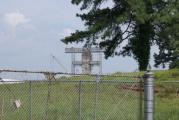 dsc67303.jpg |
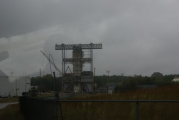 dsc57886.jpg |
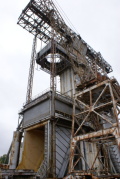 dsc57914.jpg |
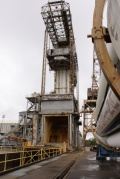 dsc57951.jpg |
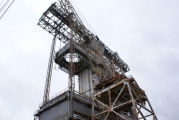 dsc57917.jpg |
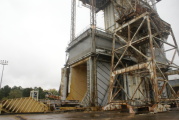 dsc57908.jpg |
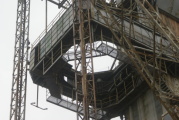 dsc57905.jpg |
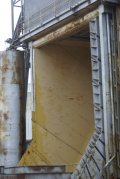 dsc57900.jpg |
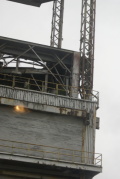 dsc57898.jpg |
Return to Marshall Space Flight Center